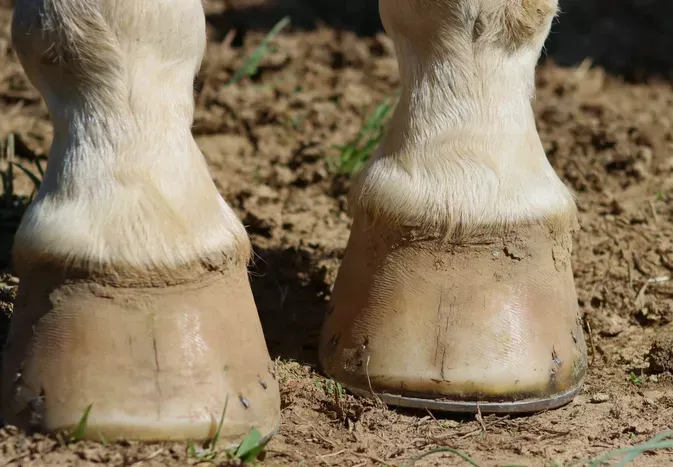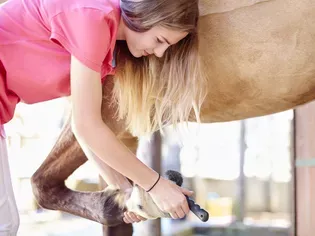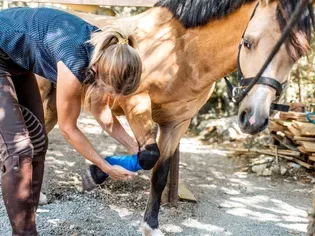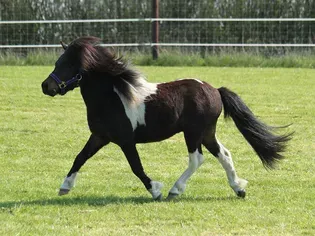Should Your Horse Wear Shoes or Go Barefoot?
Updated on 04/26/24

Should Your Horse Wear Shoes or Go Barefoot? A Comprehensive Guide
As an equestrian, you've likely pondered the age-old question: should your horse wear shoes or embrace the barefoot lifestyle? This decision hinges on a multitude of factors, including your horse's individual needs, terrain, and intended use. In this comprehensive guide, we'll delve into the pros and cons of both approaches, providing you with the knowledge to make an informed choice.
Understanding the Equine Hoof
Before we delve into the footwear debate, it's crucial to understand the anatomy and function of the equine hoof. Horses have a single, specialized toe on each foot, encased in a hard, black outer layer called the hoof wall. Beneath the hoof wall lies the sensitive and vascular laminae, which connect the hoof wall to the coffin bone.
Pros and Cons of Horseshoes
Horseshoes are metal or plastic devices designed to protect the hooves from wear and tear. They offer several potential benefits:
* Increased Traction: Horseshoes provide enhanced grip on slippery surfaces, improving stability and reducing the risk of slips and falls.
* Protection from Wear: Regular riding on hard surfaces can lead to excessive hoof wear, causing discomfort and potentially serious health issues. Horseshoes help shield the hooves from abrasion.
* Corrective Function: Horseshoes can be used to correct certain hoof imbalances or lameness issues, providing support and cushioning to the affected area.
However, horseshoes also come with drawbacks:
* Interference with Natural Hoof Function: Horseshoes restrict the natural expansion and contraction of the hoof, which can weaken the hoof wall and laminae.
* Increased Risk of Infection: Horseshoes create a moist environment that can trap bacteria and promote hoof infections.
* Cost and Maintenance: Horseshoes require regular maintenance, including trimming, balancing, and replacing, which can be costly.
Benefits of Going Barefoot
In recent years, there has been a growing trend towards barefoot horses. This approach mimics the natural state of the horse's hoof, allowing for unrestricted movement and promoting hoof health.
* Improved Hoof Function: Barefoot horses have stronger, more resilient hooves due to the constant stimulation of the laminae.
* Enhanced Proprioception: Going barefoot improves the horse's sense of balance and coordination, as it can feel the ground beneath its feet.
* Reduced Stress on Joints: The natural movement of barefoot hooves reduces stress on the joints and tendons, promoting overall well-being.
However, there are also considerations for barefoot horses:
* Limited Traction: Barefoot horses may struggle for traction on slippery or uneven surfaces, increasing the risk of injuries.
* Increased Hoof Wear: Without the protection of horseshoes, barefoot horses may experience more wear on their hooves, especially on abrasive surfaces.
* Need for Transition Period: Transitioning a horse from shod to barefoot requires a gradual process to allow the hooves to adapt.
Examples to Guide Your Decision
To help you make an informed decision, consider these examples:
* Performance Horses: Horses used for high-intensity activities, such as racing or jumping, often benefit from horseshoes to provide extra support and traction.
* Trail Horses: Horses used for leisure trail riding may be better suited for barefoot as it allows for improved balance and a more natural gait.
* Horses with Hoof Problems: Horses with hoof abnormalities, such as thin soles or weak walls, may require shoes to provide additional protection and support.
* Environmental Considerations: Factors such as terrain and climate can influence your choice. Horses in dry, sandy areas may be more comfortable barefoot, while those in wet, muddy environments may benefit from shoes.
Conclusion
The decision of whether to shoe your horse or keep it barefoot is a multifaceted one. By carefully considering the pros and cons, and taking into account your horse's individual needs, terrain, and intended use, you can make an informed choice that will promote your horse's health and well-being. Remember, ongoing monitoring and consultation with a veterinarian or experienced farrier is crucial to ensure the best possible outcome for your equine partner.
Explore More Pets

Pony Breeds
The Difference Between Horses and Ponies

Horse Diseases & Conditions
What Do I Do If My Horse Colics?

Pony Breeds
Horse and Pony Care by the Day, Week, Month and Year

Horse Grooming
Mange in Horses

Horse Diseases & Conditions
Grease Heel in Horses

Light Horse Breeds
Gypsy Vanner Horse Breed Profile

Horse Diseases & Conditions
Girth Galls and Saddle Sores

Pony Breeds
Shetland Pony Breed Profile